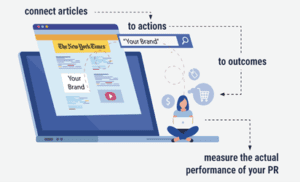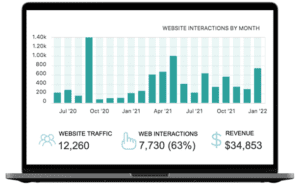One of the biggest challenges for communications professionals is understanding how their efforts influence consumer behavior so they can optimize media strategy and demonstrate tangible business value. That’s why over a decade ago, Onclusive invented, trademarked, and launched PR Attribution™ to help PR pros connect earned and owned media content to behavioral outcomes. In this article we’ll focus on the impact of publication authority on consumer behaviour.
This is the first of our May blog series, where we’ll share brand new insights into the relationship between different media attributes and consumer behavior. These will be based on our analysis of the PR Attribution™ data from over 100,000 media articles published in 2021. It cover both business-to-consumer and business-to-business brands across a wide range of industries. Some of these insights are quite surprising, so you don’t want to miss this!
“By understanding the business impact of our earned, owned and newswire efforts, we can better shape our broader strategy and make data-driven decisions around the specific content, media strategies, publications, and reporters we want to focus on moving forward. PR Attribution™ analysis also provides our leadership with the metrics they want to see, including ROI.” ~ VP of Communications, 23andMe
What is PR Attribution™?

Onclusive invented PR Attribution™ in 2011. It determines how many times people visit your website after reading an article about your brand. It also captures which actions they take. For example, view a specific page, download content, sign up for a demo, or purchase a product or service. Thanks to our proprietary newscrawler and advanced marketing technology, Onclusive can make this connection. Regardless of whether or not the article contains a link back to your website.
As a result of analysing billions of articles and evolving our attribution technology over nearly a decade, Onclusive is the only company to connect specific articles to individual website actions and revenue.

Research methodology
The purpose of this study was to understand the relationship between certain characteristics of media articles and PR-driven website traffic and actions measured by PR Attribution™. Essentially, how predictive the following characteristics are of an individual article driving website traffic and actions:
● Publication authority, including its reputation and reach,
● Article relevance toward the brand, including the presence of the brand name in the headline,
● Brand engagement, including the volume of social media amplification and presence of a backlink,
● Article sentiment toward the brand.
We analyzed 117,473 media articles published between Jan 1 and Dec 31. It included a representative sample of B2B and B2C companies across a broad set of industries. The articles in the study included only earned media content (no owned or social media) published via digital media (no print or broadcast).
Publication authority and consumer behavior
Publication authority is the overall reputation of a media publication based on its “tier”. High-reputation publications are considered Tier One, and low-reputation publications being considered Tier Three.
We found that publication authority was not as predictive of website traffic, with high and medium reputation publications. They roughly drove equal website traffic.
However, website visits from high-reputation publications drove significantly more website actions. 41.23% more than medium-reputation and 73.17% more than low-reputation publications. This means that website visits from high-reputation publications typically convert into more actions. Possibly indicating an increase in consumer trust influenced by a reputable publication.
Publication reach and consumer behavior
Publication reach is the total readership or circulation of a media outlet and, therefore, the potential audience size of any article.
Like the publication reputation, publication reach did not have a strong correlation with website traffic. This is just one of a few unexpected insights that came out of our analysis – the fact that publication reach is not a strong driver of website traffic is quite counterintuitive!
However, the publication reach of articles that drove website actions was 25.1% greater than articles that did not drive website actions. The conclusion: while reach does not predict overall traffic, articles published on websites with large reach do tend to result in more website actions once consumers arrive at a brand website.
Want more insights? Join Onclusive for the How Earned Media Drives Consumer Behavior: A Quantitative Analysis webinar on June 8th. Our panel of communications and data experts will reveal which media attributes – such as publication authority, reach, article relevance, brand sentiment and reader engagement – are key to driving action from your audience. We’ll also discuss how this data can help you improve your communications performance.
